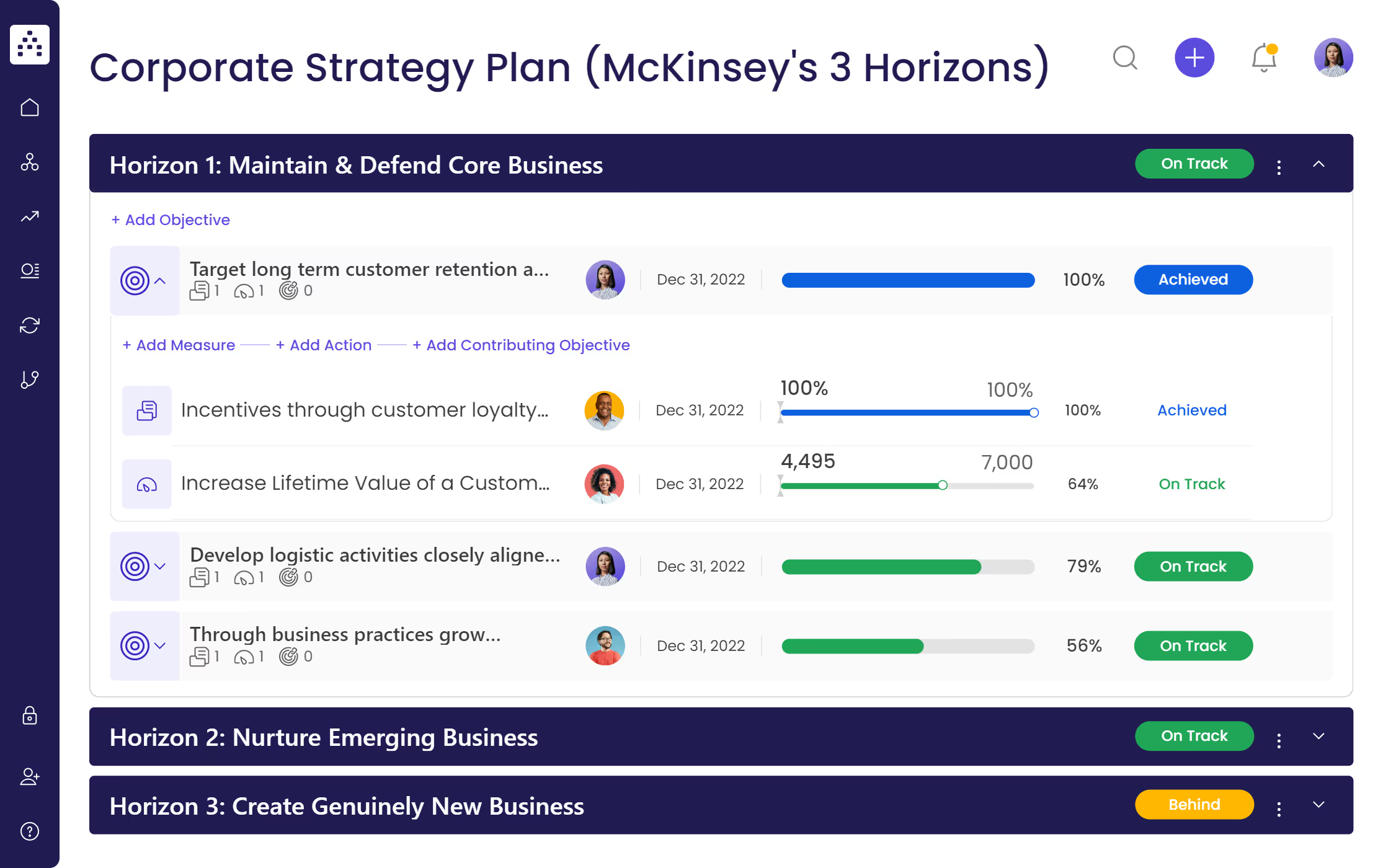What is McKinsey's 3 Horizons strategy?
Mckinsey's 3 Horizons framework is a growth strategy framework focusing on the future direction of your business.
What's included in this McKinsey's 3 Horizons strategy template?
- Mckinsey's 3 Horizons vision statement
- 4x Mckinsey's 3 Horizons Values
- 3x Mckinsey's 3 Horizons Focus Areas
- 10x Mckinsey's 3 Horizons Objectives
- 12x Mckinsey's 3 Horizons Projects
- 12x Mckinsey's 3 Horizons KPIs
Who is this McKinsey's 3 Horizons strategy template for?
Mckinsey's 3 Horizons framework can be used by any organization within any industry. Nonetheless, within such organizations, such a framework would be most useful to executive-level managers within a company. Common c-suite executives include chief executive officer (CEO), chief financial officer (CFO), chief operating officer (COO), and chief information officer (CIO).
How is this McKinsey's 3 Horizons strategy template relevant to your organization?
Implementing this Mckinsey's 3 Horizons strategy template is relevant to organizations wanting to strategically grow and manage current and future opportunities. Such a framework can prove to be useful in uncertain times and in providing your company with direction.
1. Define clear examples of your focus areas
The first step to devising a Mckinsey's 3 Horizons template would be to create focus areas. The best way to identify focus areas is to understand key areas within your business that need restructuring and focus.
Examples of strategic focus areas that could fall under Mckinsey's 3 Horizon framework could be the three horizon levels themselves or the focus areas could be divided into areas of importance i.e. customer service, research, and development, employee productivity...
2. Think about the objectives that could fall under that focus area
Within the focus areas, this strategic template has objectives that assist in defining a measurable target. The use of having strategic objectives is to guide and build the business.
Examples of some objectives for the focus area of Horizon 1: Maintain and Defend core business, could be: Develop logistic activities closely aligned to business values and through business practices grow recognition and drive revenue.
3. Set yourself measurable targets (KPIs) to tackle the objective
What next? In order to reach your objectives, it is important to have smaller measures in place to assist in achieving that set objective. KPIs are important metrics that make sure that you can accomplish your business objectives. KPIs are important in clarifying, benchmarking, and focusing on certain aspects of the business.
An example of a KPI for the objective 'Develop logistic activities closely aligned to business values' could be Increase perfect order rate.
4. Implement related projects to achieve the KPIs
Projects come into place as actionable ideas that can be implemented as ways of working towards the set KPIs.
A few examples of projects within Mckinsey's 3 Horizon framework could be: Meeting with the logistics department to develop and grow the distribution channel, Incentives through customer loyalty programs, and Invest in organization marketing campaigns to propel brand awareness.
5. Utilize Cascade tools to track and visualize performance
At Cascade, we want to make your strategy implementation as streamline as possible. The use of dashboards as a visual tool can be extremely beneficial to depcit your KPI's and projects in the form of bar charts, line graphs, and tables. The main benefit of using visual tools in the form of widgets would be that they can convert a lot of numerical data into visual information that can be easier to understand.


